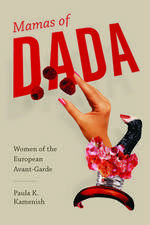Modernism, Space and the City: Edinburgh Critical Studies in Modernist Culture
Autor Andrew Thackeren Limba Engleză Hardback – 11 feb 2019
| Toate formatele și edițiile | Preț | Express |
|---|---|---|
| Paperback (1) | 186.86 lei 3-5 săpt. | +40.32 lei 7-13 zile |
| EDINBURGH UNIVERSITY PRESS – 30 noi 2020 | 186.86 lei 3-5 săpt. | +40.32 lei 7-13 zile |
| Hardback (1) | 583.84 lei 3-5 săpt. | |
| EDINBURGH UNIVERSITY PRESS – 11 feb 2019 | 583.84 lei 3-5 săpt. |
Din seria Edinburgh Critical Studies in Modernist Culture
- 10%
 Preț: 186.86 lei
Preț: 186.86 lei - 5%
 Preț: 146.43 lei
Preț: 146.43 lei - 18%
 Preț: 553.46 lei
Preț: 553.46 lei - 11%
 Preț: 159.99 lei
Preț: 159.99 lei - 18%
 Preț: 584.63 lei
Preț: 584.63 lei - 10%
 Preț: 185.93 lei
Preț: 185.93 lei - 11%
 Preț: 158.71 lei
Preț: 158.71 lei - 10%
 Preț: 194.96 lei
Preț: 194.96 lei - 5%
 Preț: 141.33 lei
Preț: 141.33 lei - 11%
 Preț: 185.47 lei
Preț: 185.47 lei - 10%
 Preț: 192.30 lei
Preț: 192.30 lei - 10%
 Preț: 174.91 lei
Preț: 174.91 lei - 5%
 Preț: 140.07 lei
Preț: 140.07 lei - 5%
 Preț: 139.61 lei
Preț: 139.61 lei - 5%
 Preț: 146.12 lei
Preț: 146.12 lei - 5%
 Preț: 140.24 lei
Preț: 140.24 lei -
 Preț: 135.01 lei
Preț: 135.01 lei - 7%
 Preț: 166.82 lei
Preț: 166.82 lei - 18%
 Preț: 552.68 lei
Preț: 552.68 lei - 18%
 Preț: 552.29 lei
Preț: 552.29 lei - 18%
 Preț: 554.07 lei
Preț: 554.07 lei - 18%
 Preț: 524.21 lei
Preț: 524.21 lei - 18%
 Preț: 524.07 lei
Preț: 524.07 lei
Preț: 583.84 lei
Preț vechi: 712.01 lei
-18% Nou
111.71€ • 116.95$ • 92.44£
Carte disponibilă
Livrare economică 15-29 martie
Specificații
ISBN-10: 0748633472
Pagini: 272
Ilustrații: 12 black & white illustrations
Dimensiuni: 157 x 234 x 20 mm
Greutate: 0.54 kg
Editura: EDINBURGH UNIVERSITY PRESS
Seria Edinburgh Critical Studies in Modernist Culture
Descriere
This innovative book aims to examine the crucial role played by the spaces of the city in the construction of modernism. By focusing upon a number of key cities the book is able to consider the influence of the urban landscape upon the various modernisms that appeared in the period from c.1890 to 1940. The book takes a distinctive approach to the topic by focusing upon the interactions between the literary texts and the institutions of cultural production found in London, Paris, Berlin and New York.
As well as exciting analyses of key modernist texts, each chapter considers the sites in which modernism emerged: publishing houses, bookshops, discussion circles, salons, and cafes. Clearly argued throughout, it demonstrates how particular geographies marked the nature of modernism by analysing new urban features such as underground transport systems; the growth of the suburbs; and architectural forms such as the skyscraper. Particular attention is given to the transnational qualities of modernist writing by examining writers whose view of the cities considered is that of migrants, exiles or strangers (e.g.
Joyce, Stein and Barnes in Paris; Eliot, James and Pound in London; Isherwood in Berlin; Kafka on New York). This book will be of major interest to all those studying modernism and also to those working in related fields, such as urban studies and cultural geography. Key Features * Wide ranging coverage of authors, texts and films in the period * Interdisciplinary analysis of the social and technological contexts of modernist production * Clear focus upon four cities of central significance to modernism * Introduces via key examples the theory of a critical literary geography























